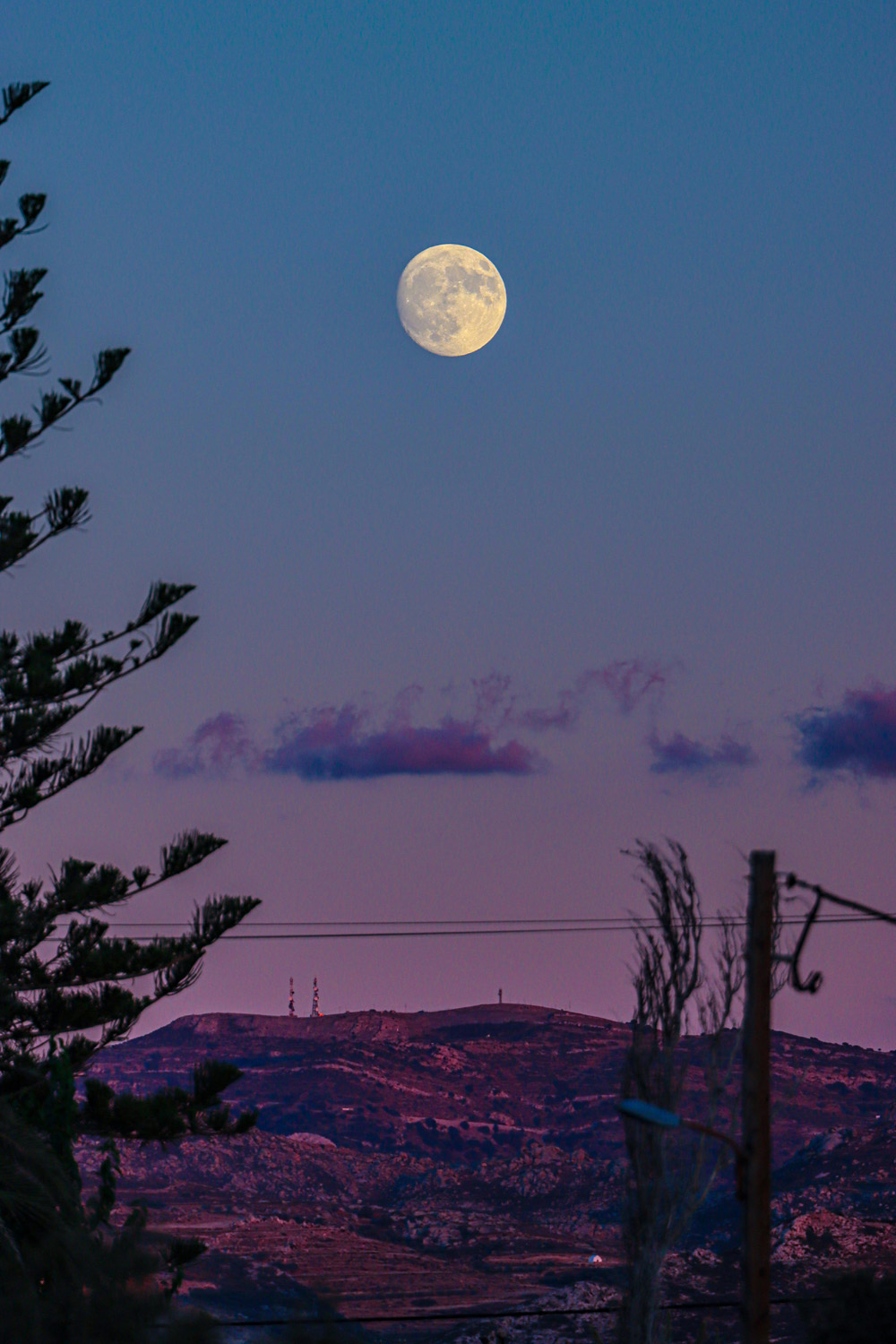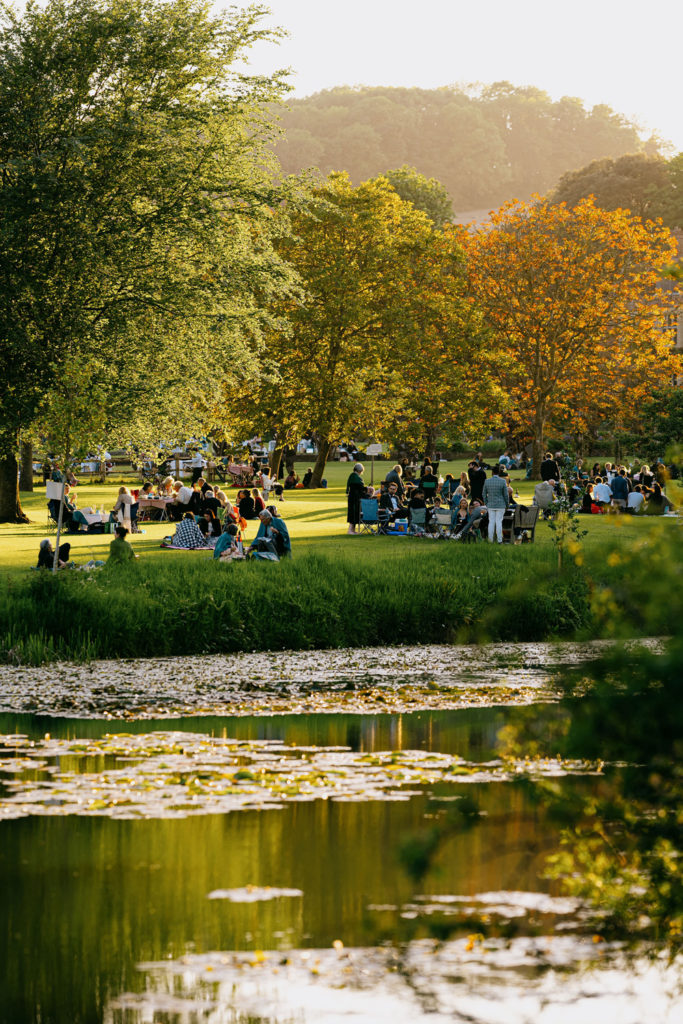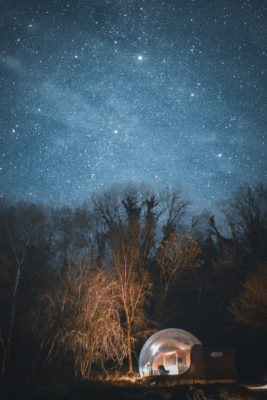
Your 2025 Full Moon Calendar
By
3 months ago
Featuring a lunar eclipse, two micromoons and two supermoons
Fancy howling at the moon? Well, tonight is the night: the first full moon of 2025 will shine in the sky, nicknamed the Wolf Moon. And if one shiny silver orb isn’t enough, we’ve gathered a full 2025 full moon calendar so you always know when to go moongazing.
Full Moon Calendar 2025
13 January: Wolf Moon
The first moon cycle of 2025 will reach its midpoint on 13 January 2025 at 10.26pm. This is the Wolf Moon, named for the packs of wolves that howl more in the winter months. The moon will rise from 3.20pm, but will be most visible after the sun has set around one hour later. The moon will then set at 8.54am the following day.
12 February: Snow Moon
February’s full moon is the Snow Moon, reaching its fullest at 1.53pm on 12 February 2025. Named for February snowfall in the northern hemisphere, the moonrise will take place at 5.03pm, followed by sunset at 5.11pm. Moonset will take place at 7.53am the following day.
14 March: Worm Moon
In March, the full moon is called the Worm Moon, and it will rise in the sky just before 6.30pm after sunset at 6.04pm. Why ‘worm moon’? Because in March, Native American tribes historically noticed the pink wriggly insects burrowing through newly-thawed soil after a cold winter.
In 2025, the Worm Moon will also experience a partial lunar eclipse, with the moon taking on a reddish hue at around 6.19am on Friday 14 March – so early birds should take a look.
13 April: Pink Moon
In April, the full moon will take place on 13 April 2025, nicknamed the Pink Moon – but sadly not due to its hue. Instead, North American tribes named the moon for the springtime flowers associated with the month and season, one specific plant known as ‘moss pink’. The moon will rise at 8.50pm, around one hour after sunset; moonset will occur at 6am the next day.
If the moon looks a little smaller on 13 April 2025, your eyes aren’t deceiving you: this year, the Pink Moon is a micromoon. The opposite of the better-known supermoon, a micromoon happens when the moon is at its point farthest away from Earth in its elliptical orbit, known as the apogee. This makes the moon appear slightly smaller – but we’re sure you’ll hardly notice.
12 May: Flower Moon
The Flower Moon is named for its association with spring flowers, but it has most recently been associated with the Leonardo DiCaprio-Robert De Niro flick, Killers of the Flower Moon. May’s full moon, the Flower Moon will rise at 9.07pm on 12 May 2025 (around 30 minutes after sunset), and set again at 4.56am the following morning. Just like April’s full moon, the full moon of May 2025 will be a micromoon.
11 June: Strawberry Moon
Named for the strawberry harvests that take place in June, the Strawberry Moon sadly won’t appear pink or red in the sky, but it will be a shiny silver full moon of June. On 11 June 2025, the sun will set at 9.17pm and the moon will rise just over one hour later, shining until 4.49am the following morning when it will begin to set below the horizon.
10 July: Buck Moon
Named for the new antlers deer typically boast in the summer, the Buck Moon is the full moon of July. It will rise at 9.45pm on 10 July 2025, half an hour after the sun has set. It will then set at 4.54am on 11 July.
9 August: Sturgeon Moon
There will be another full moon on 9 August 2025, this time nicknamed the Sturgeon Moon after the North American lake fish, which is caught more easily under the bright silver light of the full moon. In the UK, the Sturgeon full moon will rise at 8.57pm on 9 August 2025, setting the following morning at 6.42am. The sun will set at 8.34pm, so the full moon will be clear in the sky soon after.
7 September: Harvest Moon
September has long been associated with the end of summer harvest. In North America, farmers would head out into the night to get a start on harvesting their crops, or continue into the night after a long day of labour – under the silver light of the moon. Thus the Harvest Moon was named, though it is also known as the corn moon and barley moon for similar reasons. In 2025, the Harvest Moon will rise at 7.30pm on 7 September 2025, around the same time the sun sets.
In 2025, the Harvest Moon is a very special moon as it will experience a total lunar eclipse. This means the moon won’t be immediately visible when it rises: the total eclipse will begin at 6.30pm, but we won’t be able to see it (with its reddish lunar eclipse hue) until it reaches its highest point in the sky at around 7.33pm. Because this is quite a low moon, the best views will be found at high points with an unobstructed view to the east. The total eclipse will end at 7.52pm, but the partial eclipse will continue until 8.56pm. Then the ordinary full moon will sit in the night sky until 7.07am the following morning.
7 October: Hunter’s Moon
In October, the full moon is known as the Hunter’s Moon, as this is typically when Native American tribes would track and kill deer under the bright light of the moon. In 2025, it will take place on 7 October, rising at 6.14pm and setting at the later time of 9.05am the following morning. The sun will set at 6.24pm on 7 October, so the full moon will be visible all night long – weather permitting.
5 November: Beaver Moon
Associated with the wood-loving rodents who tend to build their dams and store their food for hibernation in November, Beaver Moon is the moniker given to November’s full moon. In 2025, November’s full moon will take place on 5 November – aka Bonfire Night. The sun will set at 4.26pm, half an hour after the moonrise at 3.54pm, casting a resonant silver glow over Britain’s bonfires, and providing an eerie backdrop for firework displays.
In contrast to the micromoons of April and May, the full moon in November 2025 will be a supermoon, meaning it appears slightly larger and brighter in the sky as the moon is at its closest point to earth (the perigee).
4 December: Cold Moon
The final full moon of the year is nicknamed the Cold Moon – because, well, December is pretty cold in the northern hemisphere. The final full moon of 2025 will rise at 2.52pm on 4 December, just over an hour before the sun sets at 3.53pm. And we’re ending on a high: the December 2025 full moon will be a supermoon.
The Cold Supermoon then won’t set until 9am the following morning, and from there will wane once more. The Cold Moon makes way for the whole cycle to repeat, with the Wolf Moon returning on 3 January 2026.
All times are based on London. Source: timeanddate.com

How Many Full Moons In 2025?
Every year, there are 12 full moons, with the moon cycle taking 29.5 days to complete. This adds up to 354 days for 12 full cycles, meaning every two and a half years or so, there are 13 moons scattered throughout the year. Because we are used to only one full moon per month, this moon does not fit our usual naming pattern, and is instead known as a blue moon. Hence the common phrase ‘once in a blue moon’ meaning rarely – or to be really finickity, every 2.5 years. In 2025, there will be one full moon in each month and no blue moons at all.
The next blue moon will take place on 31 May 2026. In 2018, we had a very rare lunar occurrence: two blue moons in one year. This double blue moon event will not repeat until 2037.
The Moon Phases
Brush up on your lunar lingo: these are the moon phases to know.
- New Moon
- Waxing Crescent Moon
- First Quarter Moon
- Waxing Gibbous Moon
- Full Moon
- Waning Gibbous Moon
- Third Quarter Moon
- Waning Crescent Moon
Watch the below video for a full explanation of each phase.







